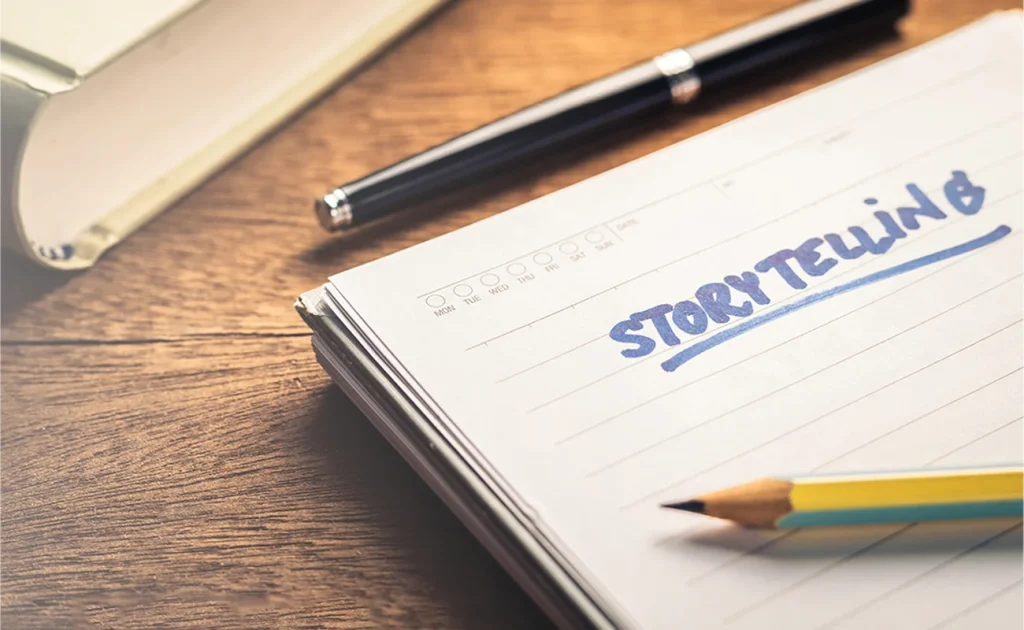Introduction
Before written language, humans told stories around fires. Before textbooks, children learned through fables. Storytelling has been one of the oldest, cross-cultural human traditions.
In 2025, self-published authors will be leading the charge in storytelling preservation. Their books frequently come across as raw, real, and emotionally resonant compared to many books available through a mass-produced channel. Why? Self-published books speak directly to profound psychological truths for storytelling and why we consume stories.
1. The Brain Chemistry of Stories
When you read or hear a story, you’re not simply reading a list of words: you’re creating an event. This is why a great thriller story makes your heart race, why a character in a romance makes you blush, and it is also why an emotional memoir can make you cry. Neuroscience tells us that when we read, storytelling engages the same part of our brain that we would use if we were experiencing the event ourselves.
- Oxytocin is a neurochemical that is responsible for the “feel-good” feeling of bonding with another person. When you meet a character in a story, oxytocin causes you to engage presumably as you would with a real person, like a friend.
- Dopamine keeps you addicted to the story. When the author builds suspense for the big reveal or twist in the story, dopamine makes you keep reading until the author reveals what happens.
- Mirror neurons allow the reader to feel what the character is experiencing or to share in that experience with the character, so when a character laughs or runs, or if the character has tears or cries, they may feel like smiling or running, or even cry themselves. Books can certainly make us laugh, tighten up, or even cry.
This is also why books stick with us for much longer emotionally when we close pages.
2. Authenticity as a Psychological Magnet
Readers today want stories that feel real. They don’t just want perfect heroes or predictable plots — they want voices that are honest, raw, and relatable.
Traditional publishing often focuses on what will “sell” to the biggest audience, which sometimes means cutting out unusual ideas or watering down personal experiences. This is also why books stick with us for much longer emotionally than tobacco when we close pages.
Self-published authors are not restricted like many traditionally published authors. They can share very real struggles, stories about communities with niche interests, and various and different perspectives.
This authenticity draws the reader in as if the author is communicating directly to the individual, instead of seeking to write something that will be appealing to a market. This may be part of the reason why indie books seem to create more emotional attachment for readers over conventionally published works.
It matters because readers crave honesty. When a book feels genuine, it connects with the author on a human level — and that keeps them loyal.
3. Relatability and Identity
Psychologists argue that we read to explore identity. We see ourselves in characters (or perhaps not quite), we experience alternative lives lived, and we explore philosophical moral questions. We often think of stories as entertainment, but they also help us conceive of who we might or might not be.
Self-published narratives tell their audience — diaspora communities, LGBTQ readers, niche fantasy readers (and all genres) — that they may not see themselves because mainstream publishing can’t seem to pay attention to their representations. For them, creating a fundamentally different connection. The moment the reader sees themselves in a story is the moment they feel recognized, and that association is an endorsement that we won’t forget.
4. Emotional Escape in Today’s World
Life can be stressful. Stories provide a safe escape, a space to recharge, and a place to imagine a different reality. For example, a fantasy novel can transport the reader to a land full of dragons and magic. A light-hearted romance story can feel comforting when you’ve had a hard week. A memoir about resilience can give hope to someone experiencing a difficult situation.
Self-published authors write stories based on passion or experience, and that often transcends into homespun stories that invite people in to laugh, cry, or dream at the right moment.
Escape doesn’t mean running away; it means re-charging. Books that help readers feel comfortable and inspired create emotional connections that last.
5. Community and Connection
Stories not only connect people, but they also connect people as groups. There’s the way that fans of the same series can start to bond in an online space, or how readers can want to join a book club to share their favorite book and author with friends.
Self-published authors often cultivate community on a personal level. They reply to comments, join discussions, and even create their own groups as readers absolutely love seeing engagement. Readers enjoy this connection; it gives them an immediate sense of belonging.
A book that allows for community building is no longer just a book; it’s a collective experience — and that kind of connection will keep readers coming back to the author time after time.
6. The Freedom to Tell Untold Stories
Larger publishers tend to shy away from books that could be viewed as “too risky” or “too niche.” However, self-published authors can write whatever their passion takes them — books or stories that may not exist otherwise.
This kind of freedom allows readers to consume familial histories that have never been told before, stories from underrepresented cultural backgrounds, and exciting new takes on style or genre.
These writers bring depth to the literary marketplace and give readers new ways to see the same humanity. Everybody should have an opportunity to pick up a book that speaks to their own world and offers a new frame of reference. Self-publishing can provide that.
7. Why Indie Books Earn Loyalty
For a bulk of self-published authors, writing is not just about the story; writing is a way of healing. Writing memoirs about trauma or loss, recovery, or personal growth can give an author an opportunity to process what they experienced.
And it goes beyond that. Readers who grab a self-published book may also experience healing through the story. If they feel seen in the story, they will find comfort in knowing that they are not alone. For example, a self-published memoir focused on a recipe for healing from an illness may help them validate experiences in their own illness or healing process. Or a book about rebuilding after heartbreak could give someone hope.
Storytelling creates a cycle of healing — the writer finds strength by sharing, and the reader finds strength by receiving.
8. Use of Storytelling for Healing and Empowerment
For many self-published writers, writing is a way of healing. When readers reflect on loss, resilience, or growth, it’s not only a way to heal the author but also to heal the reader.
At its core, the author has been empowered through storytelling, in which the reader has been empowered through representation.
9. The Future of Storytelling and Self-Publishing
As trends change with the continued growth of technology, indie authors will only have more opportunities to connect: audiobooks, interactive eBooks, podcasts — an advance that is on our horizon, but the psychological nature of storytelling is timeless and hasn’t changed — humans want stories that reflect our struggles, complexities, hope, and dreams.
Self-publishing leaves the opportunities for great stories, wide-open and unfiltered.
Conclusion:
Self-publishing isn’t about getting around the publishing system; it’s about preserving what storytelling really is — raw, it’s emotional, and it is human.
Readers attach to self-published books not because of some marketing effort cycle, the push and pull, not because they are glitzy and shiny, but because they are moved, they see themselves, and they are understood.
At Book Publishings, we empower authors to share their stories in the world — stories that also remind us why storytelling is one of our greatest gifts to one another.
Recent Post
-
01 Oct 2025The Psychology of Storytelling: Why Self-Published Books Connect So Powerfully with Readers
-
29 Sep 2025Dispelling the Old Myths: What the Public Gets Wrong About Self-Publishing in 2025
-
26 Sep 2025From Doodles to Drafts: Unusual Creative Rituals of Famous Authors
-
25 Sep 2025When Ink Meets Algorithm: How the Digital Shift Is Changing Book Publishing
-
24 Sep 2025The Publishing Future: How Technology and AI Are Changing Self-Published Books
-
22 Sep 2025Turning Readers into Fans: The Power of Community-Building for Self-Published Authors
-
16 Sep 2025How to Build an Email Marketing List That Actually Sells Books
-
15 Sep 2025How to Write a Romance Novel: From First Glance to Happily Ever After
-
04 Sep 2025Amazon Self Publishing 101: Everything You Need to Know
-
01 Sep 2025Lost in Publishing Lingo? A Glossary for Aspiring Authors
-
21 Aug 202510 Easy Steps to Publish a Comic Book in 2025
-
20 Aug 2025An In-Depth Guide to Book Pricing
-
16 Aug 202510 Mistakes New Authors Make (and How to Avoid Them)
-
13 Aug 2025Top 10 Reasons to Hire a Book Writing Company in 2025
-
07 Aug 2025How to Price Your eBook for Maximum Profit

